Highlights:
The IRC deploys a unique methodology to identify crises before they deteriorate. The IRC analyzes 67 indicators, including measures of fragility, economic resilience, conflict intensity, natural hazard and pandemic risks, and displacement. This data analysis is complemented by the insights of IRC staff on the ground and external partners and experts. Countries are selected according to their risk of deterioration, not based on whether they are the largest or most severe crises.
The world is seeing record levels of humanitarian need in 2022 because the guardrails that protect communities from humanitarian catastrophe are being weakened, leaving three key accelerators of humanitarian need—conflict, climate change and economic turmoil—unchecked.
Conflict remains the key accelerator of humanitarian crisis, driving 80% of humanitarian need. Conflicts are increasing in both duration and size. Watchlist countries have experienced armed conflict for an average of 12 years—fueled in part by a large number of internationalized intrastate conflicts, where at least one foreign country contributes troops. The internationalization of conflict tends to make them deadlier and last longer. Parties to conflicts are also operating with impunity, attacking civilian infrastructure and weaponizing aid. Nearly 40 countries, including every single Watchlist country, are experiencing high to extreme constraints on humanitarian access.
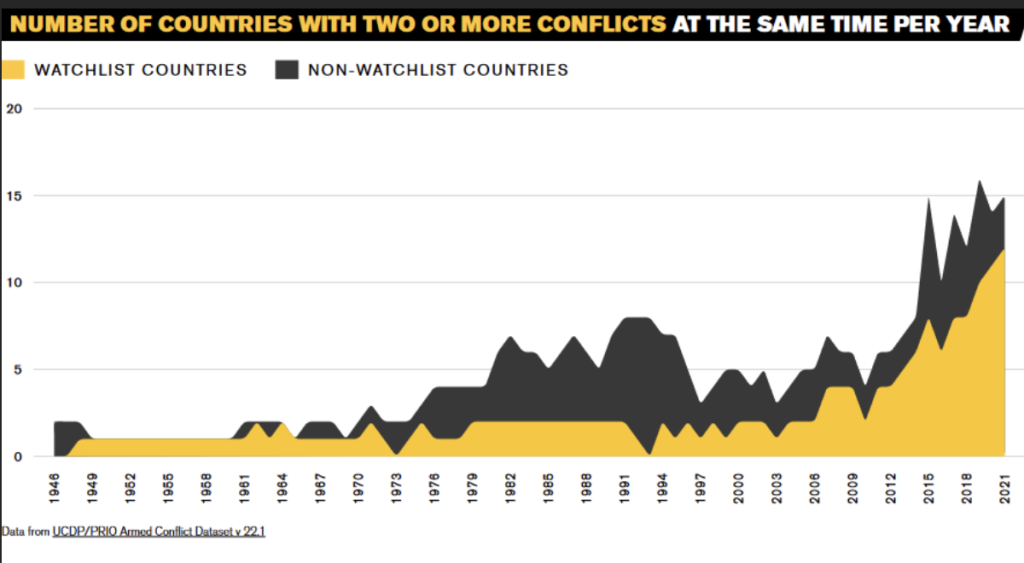
Climate change is rapidly accelerating humanitarian emergencies despite the fact that Watchlist countries bear little responsibility for climate change. They contributed just 1.9% of global CO2 emissions in 2019 and emit just a fifth of the CO2 per capita when compared to global averages. Despite this, they face some of the worst climate related disasters. The climate preparedness of Watchlist countries is steadily declining. In 2020, climate financing per capita for conflict-affected countries was a third of what other countries received.
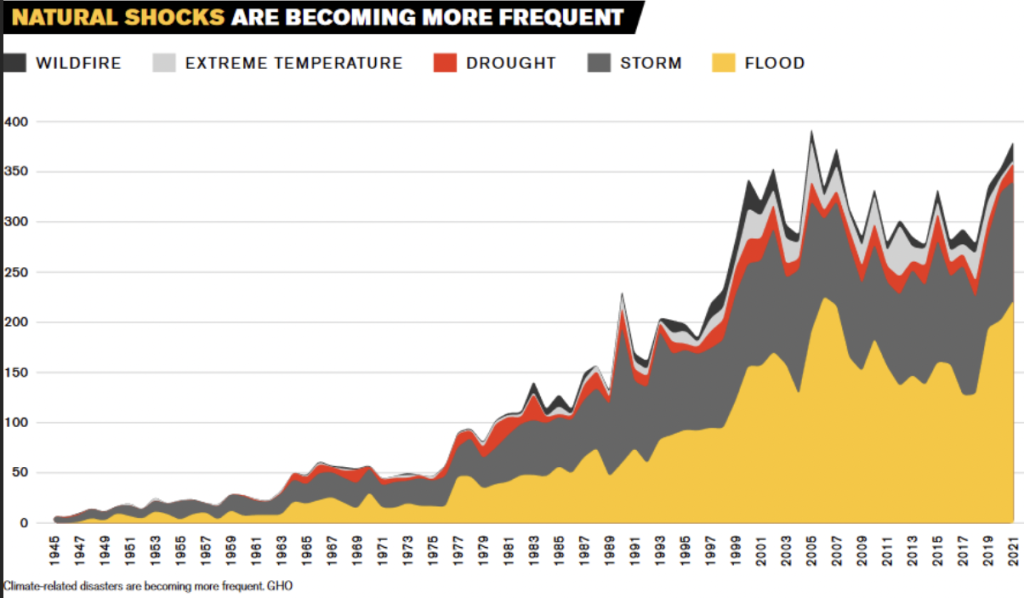
Economic turmoil across Watchlist countries is deepening food insecurity and rapidly exacerbating poverty. The ripple effects of Russia’s invasion of Ukraine on global food and fuel prices, and long-term impacts of COVID-19 are putting necessities out of reach for many. Seven Watchlist countries imported an average of 66% of their wheat from Russia and Ukraine—with this percentage rising to 90% in Somalia.
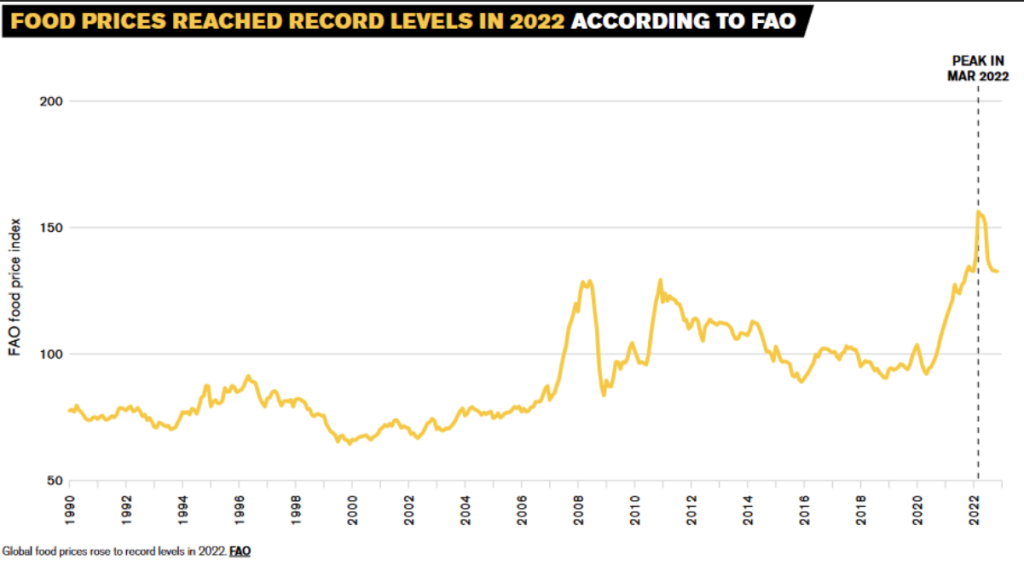
The Emergency Watchlist shows real peril ahead in 2023.
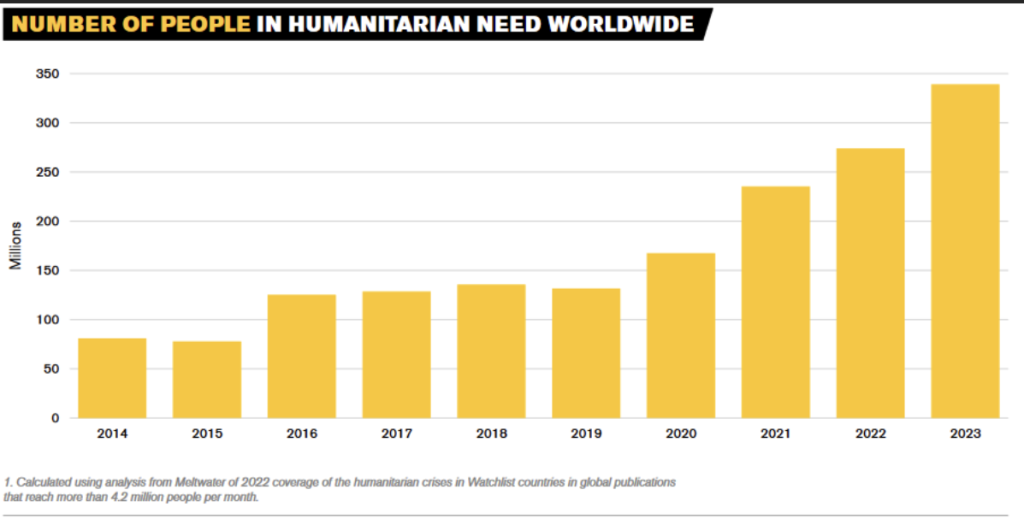
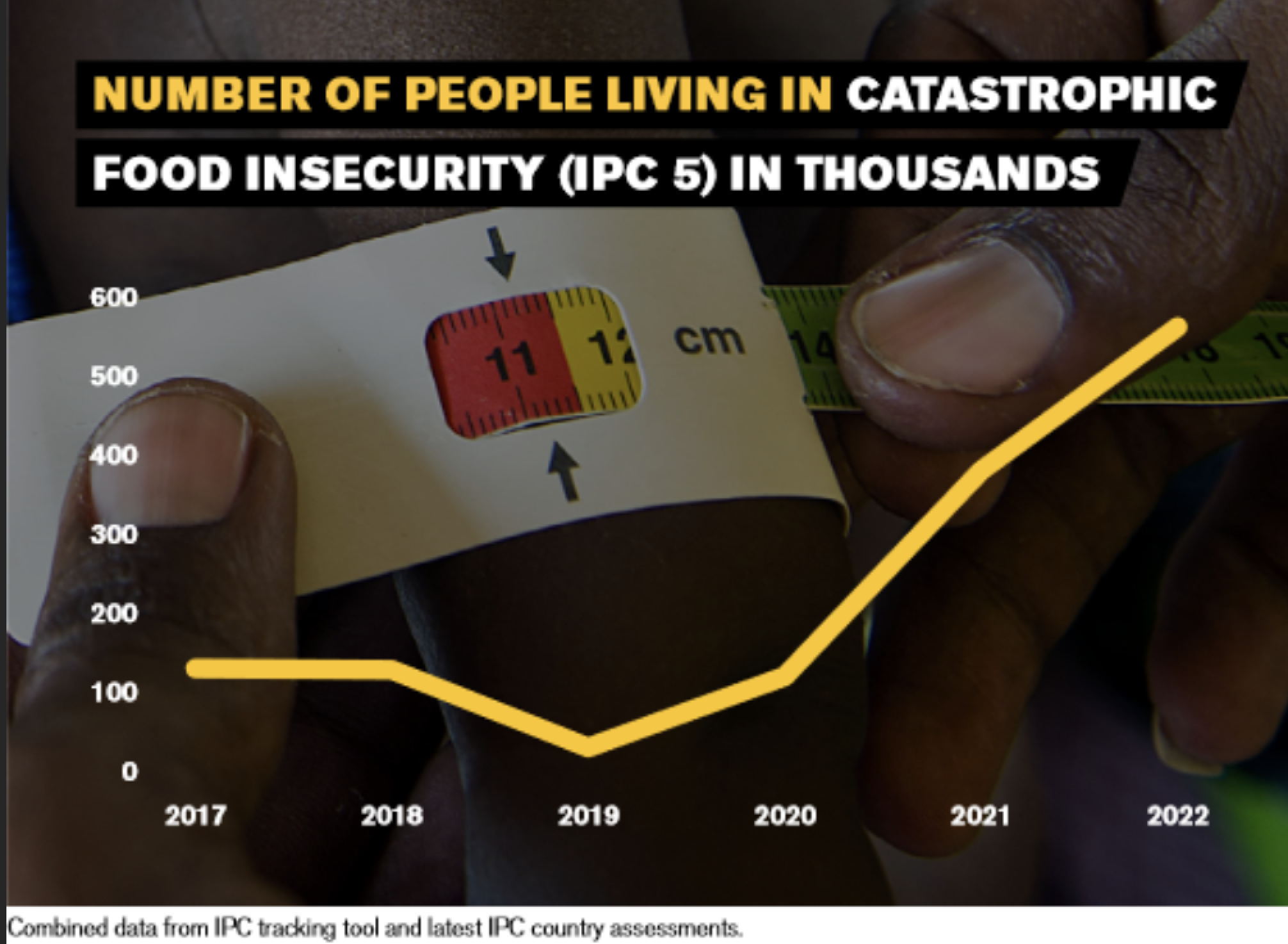
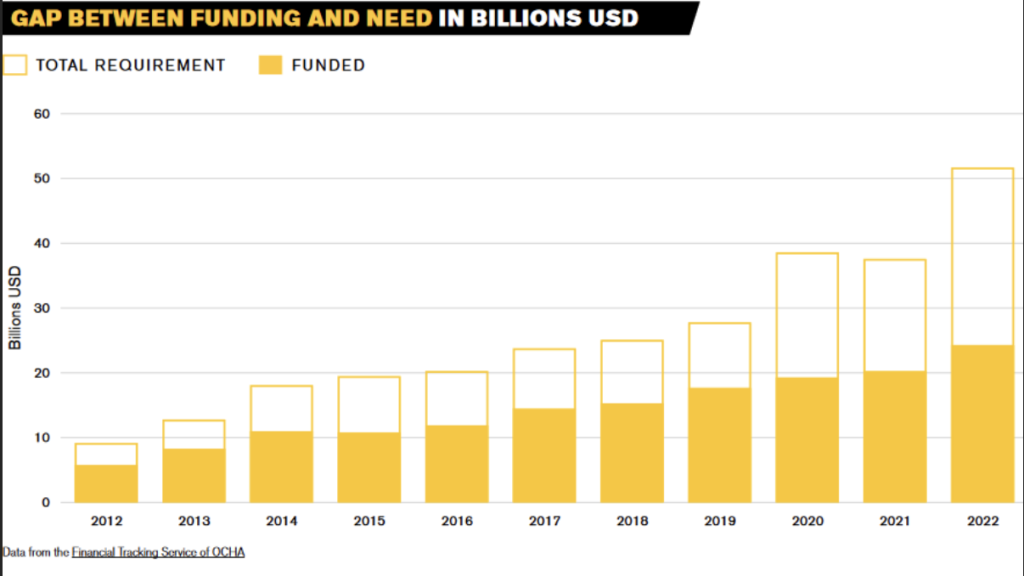
What are guardrails against crisis? Guardrails are actions, policies and mechanisms that actors at all levels—from the global through the regional, national and local—can put in place to reduce the impact of crises on affected communities. Prevention - Social services and safety nets that make humanitarian crises less likely.
Early action - Identifying and preempting risks as they emerge, for example by distributing cash to families living in an area that will soon be hit by flooding.
Mitigation - Reducing the impact on communities from crises that are already underway, for example by delivering food aid or deploying peacekeeping forces to protect civilians.
Resolution - Efforts to resolve a crisis, for example by trying to reach a peaceful settlement to end an armed conflict.
Accountability - Operating alongside the different types of guardrails, accountability influences the actors within a crisis and incentivizes them to reduce the humanitarian impact of a crisis, resolve it and, in time, prevent its recurrence. Some examples of accountability include awareness raising, UN resolutions and transitional justice mechanisms.

Login (or register) to follow this conversation, and get a Public Profile to add a comment (see Help).
24 Jan 2023
Leveraging Disruptive Technologies for Food Security: A Systematic Review on Agricultural Supply Chain Resilience to Climate Change
Climate and Carbon Policy Pathways for Sustainable Food Systems
Drought in agriculture and climate-smart mitigation strategies
Share this page